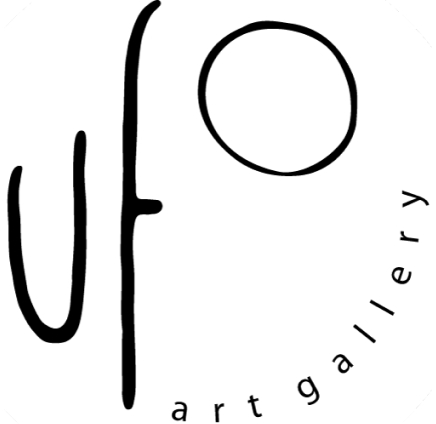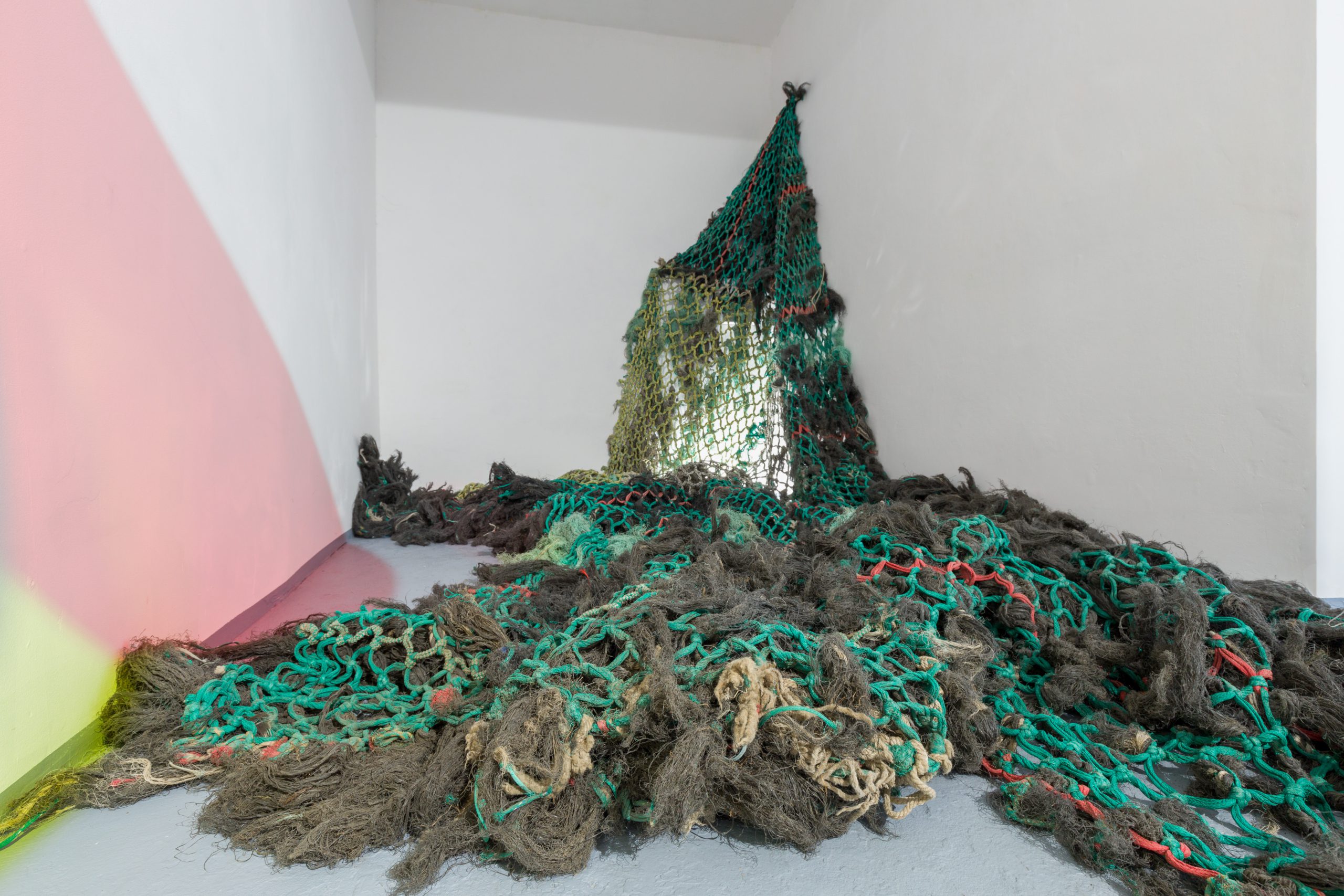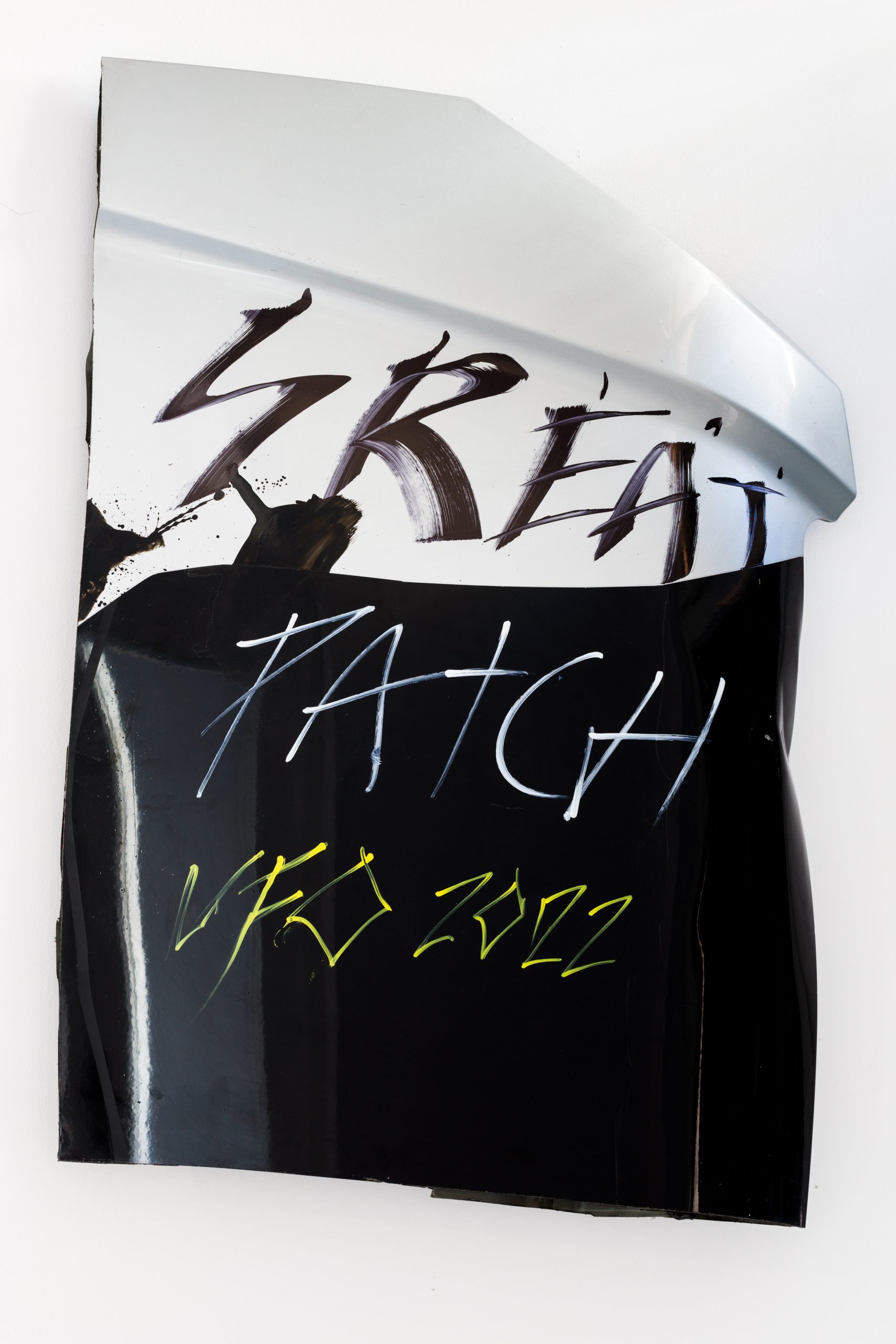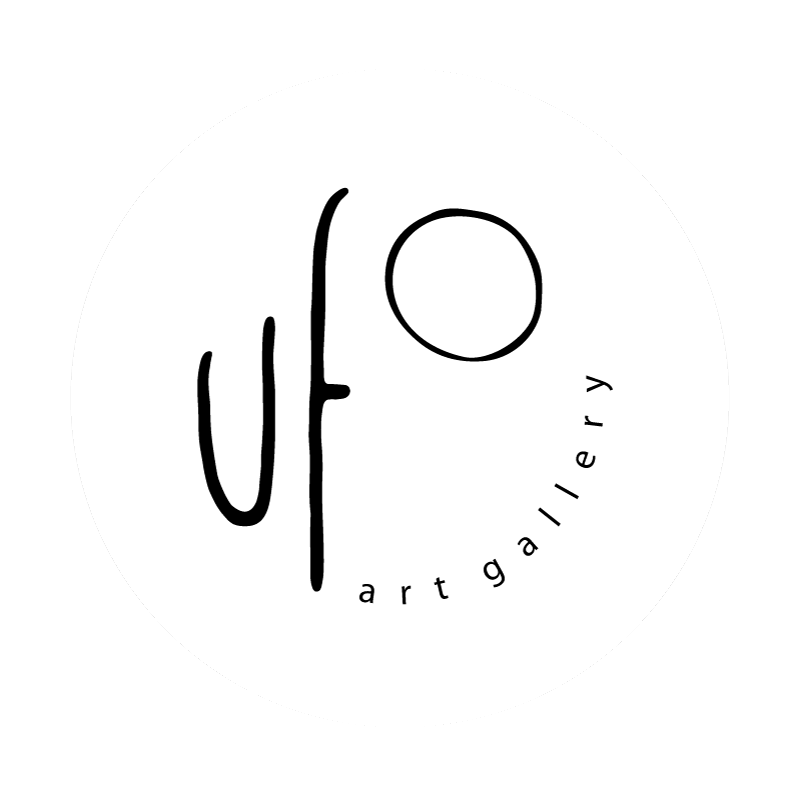„(…) The artist Hulda Rós Guðnadóttir searched for and found the ghost net in Kollafjarðarnes, a fjord on the eastern side of Iceland’s West Fjords. The net was moved from Strandir to the main road with the help of three people from Worldwide Friends and Ragnar, a farmer from Heydalsá. Again and again they washed the ghost net in the water. After a night at the school Reykjaskoli, the net and the artist, Hulda and the ghost, drove towards Reykjavik, the washed net drying in the driving wind. Many hands helped the artist there to straighten and clean the ropes: the curator Helga Oskarsdótti, Eduardo from Venezuela and the art-loving Hekla. (…)
A ghost net is a fishing net that has been lost or abandoned in the ocean. The nets floating and lying in the sea or found on coasts continue to function as uncontrolled traps for marine wildlife. Animals get caught and injured in the cords and lines. According to the Food and Agriculture Organization of the United Nations (FAO) up to 25,000 nets sink each year in European waters alone. The nets are partially plastic and divide into small particles that do not dissolve but become part of the food chain as microplastics. According to the World Wide Fund for Nature (WWF), ghost nets accounted for more than forty percent of the giant Great Pacific Garbage Patch in 2018.
Hulda Rós Guðnadóttir works with the aesthetics of the harbor and those working there. The Ghost Net points not only to the impact of the fishing industry on the environment, but also to the effort and labor involved in transporting and cleaning (the net and the environment from the net) by the artist.”
/Leonie Hugendubel/









